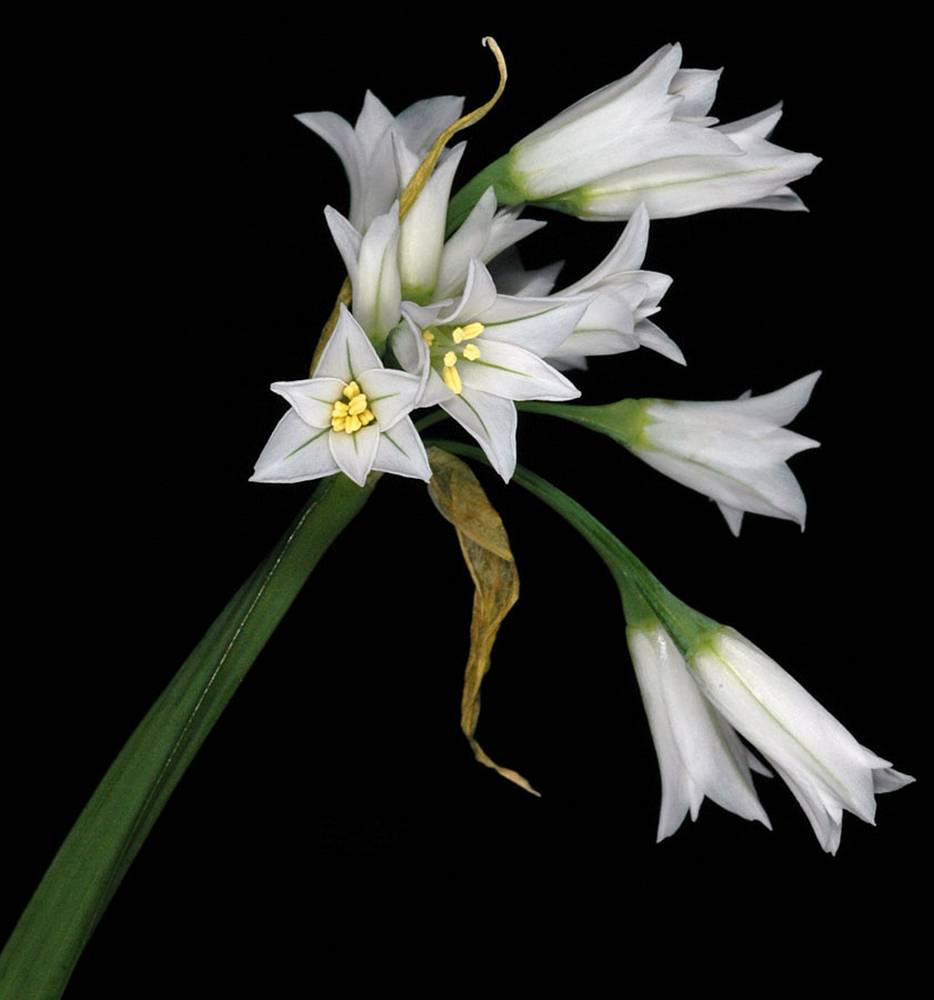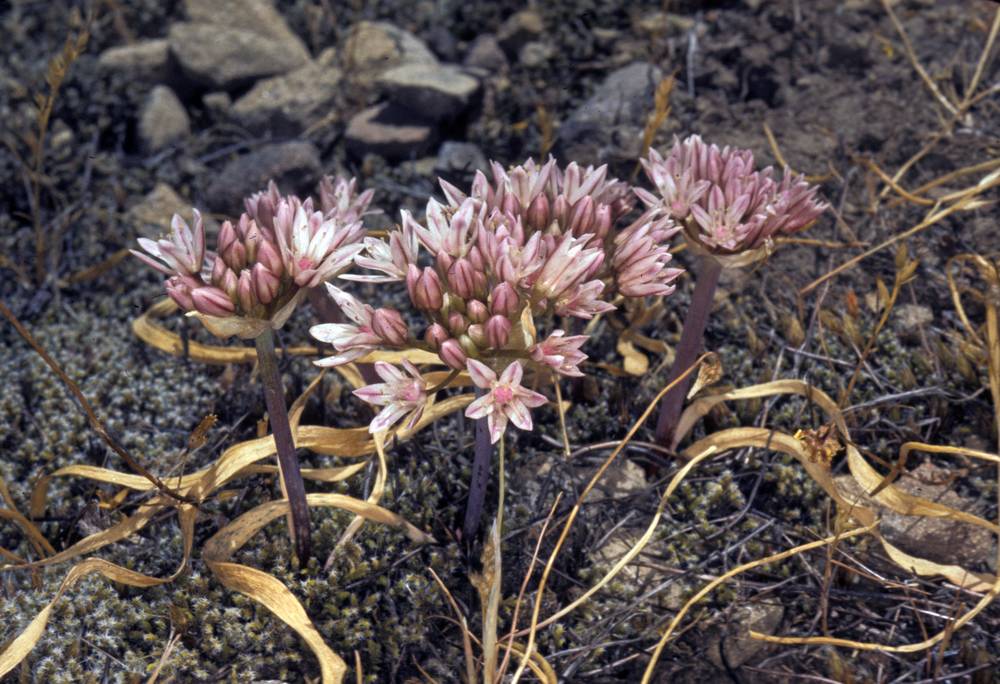Allium triquetrum
Allium
three-corner leek
onion
5–20+; increase bulbs absent or more or less equaling parent bulbs, never appearing as basal cluster; ovoid;
outer coats enclosing renewal bulbs; more or less translucent, obscurely cellular-reticulate; thin, membranous; meshes delicate;
cells vertically elongate, contorted; without fibers.
persistent, green at anthesis, 2–3;
blades solid; flat, not falcate; more or less keeled, 15–50 cm × 3–15 mm;
margins entire.
usually withering from tip by anthesis, usually persistent, 1–12;
basal;
blade usually linear; terete, channeled, or flat (keeled in A. triquetrum and A. unifolium); straight or more or less falcate, usually not petiolate.
persistent, clustered; erect; solid, sharply 3-angled, 10–40 cm × 1–10 mm.
usually persistent; terete, flattened, or triangular.
umbellate;
flowers sometimes replaced by bulbils;
pedicels erect or spreading (lax in A. triquetrum), subtending spathe bracts conspicuous; more or less fused, membranous.
persistent; lax; loose, 3–15-flowered; more or less 1-sided;
pedicels 15–25 mm;
spathe bracts 1–2.
becoming pendent, 10–18 mm;
tepals erect to spreading, lanceolate; more or less equal, white with prominent green midrib;
margins entire;
apex acute;
stamens included;
ovary crestless;
stigma scarcely thickened, unlobed.
erect (pendent in A. triquetrum);
tepals 6; in 2 similar whorls; more or less distinct; petal-like, usually persistent;
stamens 6;
filaments usually broad at base, fused into ring, glabrous (papillose to ciliate proximally);
ovary superior, 3-lobed, sometimes crested; crests obscure to prominent;
style 1;
stigma usually narrowly capitate to more or less 3-lobed.
loculicidal capsules.
black; smooth and shiny or minutely roughened.
=18.
Allium triquetrum
Allium
Road ditches, lawns, and other disturbed moist sites. Flowering Apr–Jul. 400–2800 m. BR, BW, Col, ECas, Lava, Owy. CA; Europe. Exotic.
Allium triquetrum is cultivated for its attractive flowers. It readily escapes in south coastal Oregon and California and has potential to become invasive.
Mostly Northern Hemisphere. 550–700 species; 34 species treated in Flora.
In the recent splitting of Liliaceae sensu lato (Stevens 2012), Allium was classified within the family Amaryllidaceae, in the order Asparagales. All members of Allium smell more or less like onions or garlic and are more or less edible, though not always pleasant tasting. Bulb coat reticulations are frequently important in identification; they are best viewed on the inner surface of the outer coats. Descriptions of reticulations assume 10× magnification. Allium membranaceum (papery onion) was collected in Jackson County in 2010. It may be a waif. This species is known to occur in California. Allium cepa (cultivated onion) occurs as a waif near onion fields and along dirt roads on which they are transported. It is also known from the wild in California and Washington.
Nick Otting, Richard Brainerd, Barbara Wilson
Nick Otting, Richard Brainerd, Barbara Wilson




